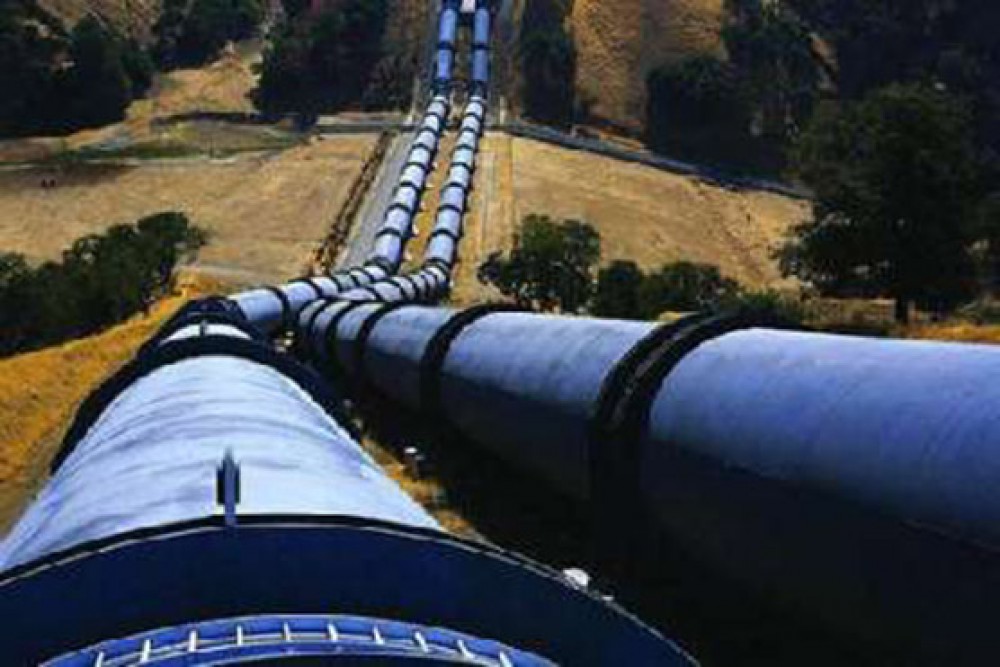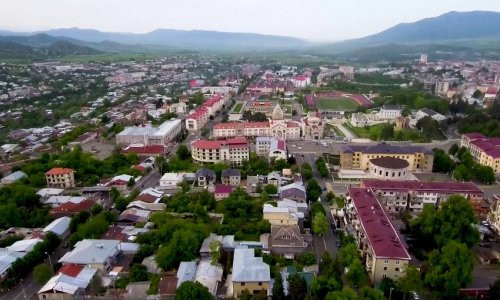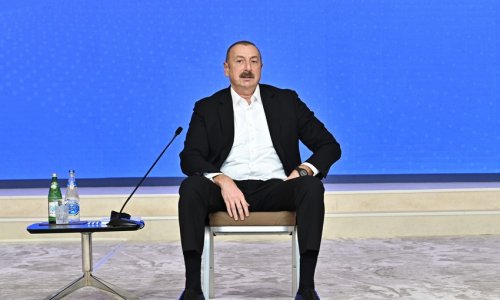By Robert M. Cutler
Even before Turkey’s shoot-down of a Russian bomber for violating its airspace, there was Russia Turkey energy conflict over "renovated” prospects for the Turkish Stream natural gas pipeline project between the two countries. One had the right to be skeptical, and has it still more so after the military confrontation.
In Antalya at the G20 meeting earlier in November, Presidents Recep Tayyip Erdogan of Turkey and Vladimir Putin of Russia reached agreement to begin talking again about the Turkish Stream pipeline but on nearly nothing else. Key to any success of Turkish Stream is the need for a pipeline to take Russian gas into Europe. The newest candidate for this is the Tesla pipeline is projected to run 1,400 kilometers from Greece to Hungary, passing through Serbia and Former Yugoslav Republic of Macedonia (FYROM).
The Tesla project indeed basically duplicates a discarded fork of the route of the Gazprom’s old discarded South Stream project. Tesla is supposed to carry a volume of 27 billion cubic meters per year (bcm/y), allegedly to be supplied not only by Turkish Stream but also by the Trans-Anatolian Gas Pipeline (TANAP).
A report in the Turkish newspaper Daily Sabah makes a great deal of the fact that the European Commission (EC) has included the Tesla project on a list that it has drawn up, of "Projects of Common [EU] Interest” in energy infrastructure, along with over 250 other infrastructure projects in every sector of energy policy.
But Daily Sabah‘s origins make it necessary to read between the lines. It is an English-language newspaper that began publishing only in 2014, often identified as a mouthpiece of the ruling party. It is specifically very critical of the Guelen social movement in Turkey, with which Erdogan aligned while consolidating his power but from which he has since split.
It is owned by the same holding company that publishes the Turkish-language newspaper Sabah, a publication seized by the Turkish government in 2007 under legal pretexts, and which has since taken a strict pro-government line. Yet the two publications are not identical in content, and that is where things get interesting.
Specifically, it is not the case that the EU’s move "signifies a critical support for the Turkish Stream project”: a claim made by the newspaper Sabah in its English-language report, intended to influence European elite and public opinion, but not in its Turkish-language report, which is targeted at its own domestic readership, and which specialists in Turkey and Russia will read.
Both versions state unequivocally that the EU has given support to the Tesla pipeline, which is planned to take gas from the Turkish Stream into Central and South East Europe (CSEE), once it enters Greece from Turkey.
But it is also necessary to understand what this EU "support” really is. This is not any sort of official endorsement, and it does not mean that the EC will take steps to realize it. It only means that the Tesla project is a candidate for realization if third parties successfully organize and promote it on a commercial basis, and if it satisfies all legal requirements including those of the Third Energy Package (TEP).
Gazprom chief Alexei Miller finally admitted weeks ago that a maximum of two pipeline strings of the Turkish Stream would be built (31.5 bcm/y instead of the originally planned 63 bcm/y). Of this, about half would be for domestic Turkish consumption, supposedly replacing the gas that Russia intends to stop sending through Ukraine to Turkey (via Romania and Bulgaria) in 2019. That leaves 15 bcm/y for the Tesla project, meaning that it would have to count on 12 bcm/y from TANAP.
But TANAP is being constructed in the first instance for only 16 bcm/y, of which 6 bcm/y is for domestic Turkish consumption and the remainder is for the Trans-Adriatic Pipeline to Italy. TANAP was planned to be theoretically scalable eventually to 62 bcm/y, if the Trans-Caspian Gas Pipeline (TCGP) is ever built, permitting gas from Turkmenistan to come on-line to Europe. At Europe’s request, TANAP’s planned volume already has been scaled up to 23 bcm/y, but this is projected only by 2023; and 31 bcm/y, projected only by 2026. Those figures are of course subject to revision and postponement.
So there really is no gas from TANAP for the Tesla project. And while Tesla exists merely as a non-binding Memorandum of Understanding, TAP has just this month moved into the execution phase with awards of major procurement contracts already announced (and the first construction of roads and bridges in Albania under way) and to be completed by the end of the current year.
In other words, Tesla looks like failing for the same reasons as those why South Stream failed. These reasons are that non-Russian sources of financing will be hard to find, and Russia is unlikely to build it only to find itself subject to TEP rules of equal non-monopolistic access for all producers.
Both Sabah reports fail to mention the Eastring project, which is competing with Tesla and which is being promoted in Europe by former Czech prime minister Mirek Topolánek, who was President of the EU Council in 2009. The two variants of the Eastring project would run from eastern Slovakia either to northern Romania or to the Turkish-Bulgarian border.
Eastring would be bi-directional. Thus it could deliver TANAP gas to CSEE entering from Bulgaria, or it could be reversed to deliver gas entering from Slovakia from other producers to CSEE. It is much better able than the Tesla project, to contribute to diversification of sources, which is a main policy direction of the EU’s Energy Union.
All this would seem to be a bad omen for Turkish Stream. But the worst current news for it is in fact contained in an exclusive interview for Sabah, given by the Energy and Natural Resources Minister Ali Rıza Alaboyun. He said that it was still necessary to discuss whether Turkish Stream would be a transit pipeline only.
This means that Turkey still does not wish to be only a transit country and has not abandoned its demand for capital investment and training from Russia in petrochemical industrial enterprises on Turkish territory. After all, Azerbaijan volunteered this to Turkey as part of its investment in TANAP.
This issue is another knot that needs to be unravelled, and there is no guarantee of success. Sabah‘s English-language report states unequivocally, that it is "likely” that a bilateral agreement on Turkish Stream will be signed in mid-December, when Erdogan has been scheduled to visit Moscow. However, its Turkish-language report is much more realistic and makes no such claim.
The loss of the Russian bomber now puts into doubt such a mid-December visit. It was possible that the two leaders could have reached an agreement to overcome differences, just as in Antalya they reportedly resolved the question about when the 10.25 per cent price discount for Russian gas to Turkey would take effect.
The December Turkish-Russian meeting would have included wide-scale and specialized bilateral consultations on industrial cooperation and joint projects, but new Russian statements have questioned the continuation of such cooperation with Turkey, including the construction of a nuclear plant for generating electricity as well as natural gas storage in Turkey.
It follows that the tension between the two countries only confirms Azerbaijan’s key role in energy supply to Turkey and, through Turkey, to Europe as a whole.
NOTE: Robert M Cutler is senior research fellow in the Institute of European, Russian and Eurasian Studies, Carleton University, Canada. He consults privately in a variety of fields ranging from organizational design of international institutions to advice on Caspian Sea region investments to redaction of expert affadavits and testimony on human rights conditions in Central Asia.
(Atimes.com)
www.ann.az
Follow us !











